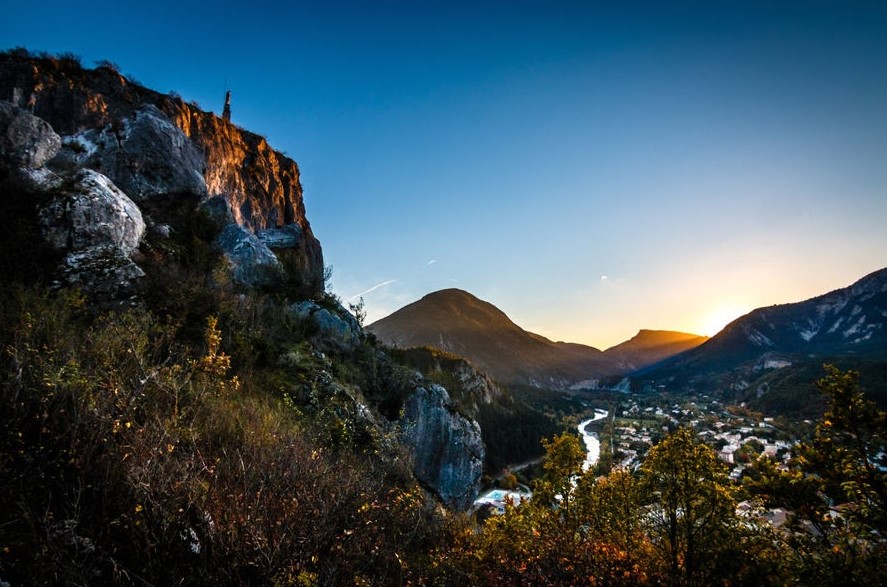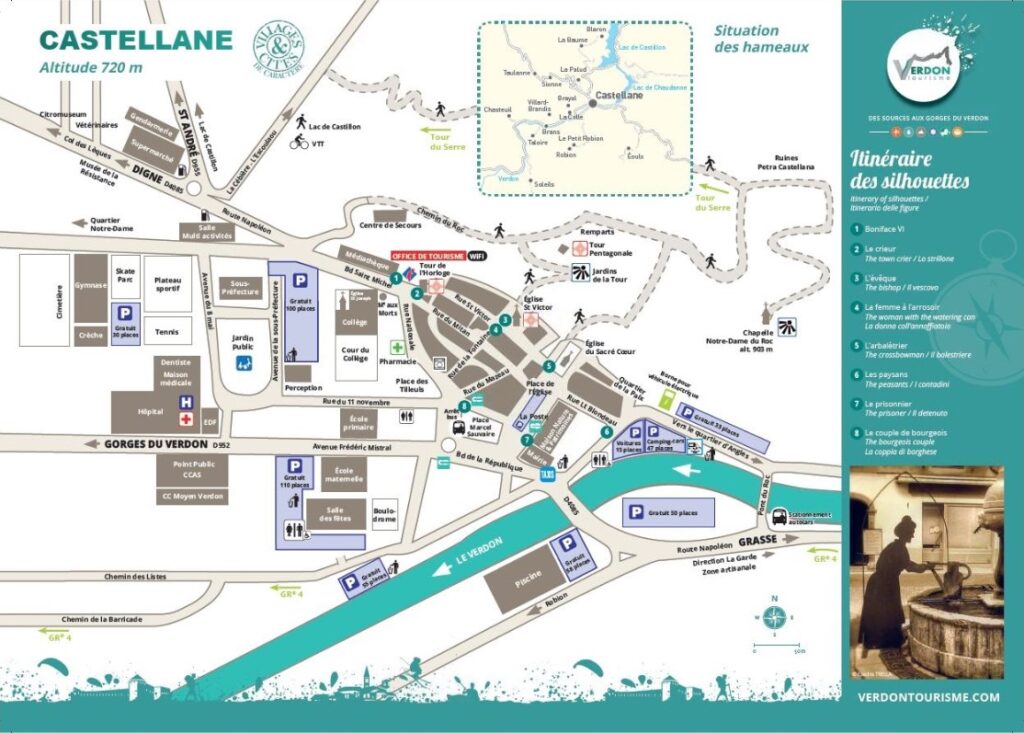The material and landscape adventure> Stone in all its forms
Step 3

alt_route Option 2 - Tour du Roc trail
Castellane has an exceptional built heritage consisting of several buildings classified as Historical Monuments and built with local stones.
The “Tour du Roc” hiking trail runs right next to the Jardins de la Tour. Do not hesitate to go through the door and take a look at the roofs of Castellane and the Pentagonal Tower. The path will take you to the Notre-Dame du Roc chapel, the site of Petra Castellana and the parish church of the Sacred Heart. From the latter, you will have the opportunity to visit the nearby Saint Victor church.
Tour du Roc hike
Level: Very easy
Duration: 2 hour
Type: Buckle
Length: 3,7 km
Elevation gain: 252 m
Departure / Arrival: Parking St Michel or church square, Castellane
More informations: http://www.rando-alpes-haute-provence.fr/randonnee-pedestre/tour-du-roc/

Learn more
Stone and construction
To build the town of Castellane and its monuments, the inhabitants used the resources available locally: limestone.
A first example are the Jardins de la Tour, which have been laid out in terraces called here “restanques”. These are walls built in dry stones, taken from the fields, which make it possible to create a flat terrace on top, intended for cultivation. This development technique is found in most places with a steep slope. If you look closely, you can still distinguish terraces up to the top of the neighboring mountains and hills!
The Pentagonal Tower is the second example. Dating from 1395, it is part of the ramparts that have protected the town of Castellane since the Middle Ages. It is the most imposing of the city's fortification system! Its masonry is made up of small, irregular building stones made of rough limestone. The angles, in freestone, are mainly in cargneule: another very hard rock, despite the many holes that characterize it. These slightly reddish stones on the surface occupy part of the slope to the north of the Roc.